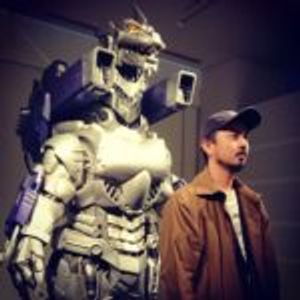We’re in the Reiwa era. Tattoos, once proof of gang affiliation, are being transformed into something with a different cultural context, especially by a younger generation that sees them as a part of fashion.
“Otattoo” was born out of a new sense of values, in which characters from the otaku world of anime and video games across generations can be engraved into the skin with vivid color and animated expressions. In this era, where the line between otaku and non-otaku is disappearing, a culture of otaku-tattoos is gaining momentum, spreading across the world.
For this interview, we dropped by Invasion Club, a tattoo studio in Nipponbashi, Osaka, to hear from the “otattoo evangelist” himself, Hori Benny. He talks spryly about the world of “otattoo,” cracking jokes here and there in fluent Kansai dialect, alongside his love for anime and manga works and the challenges he faces day to day.

Hori Benny (彫紅)
Born in America, 1978. Moved to Japan in 2002, beginning an apprenticeship at Chopstick Tattoo in 2004. Debuted professionally as a tattoo artist in 2007 before going independent in 2014. Currently based in Nipponbashi, Osaka, where he runs the tattoo studio Invasion Club. He usually spends his free time with manga and anime, both of which he prefers to consume in Japanese, as he believes linguistic differences and changes in tone of voice greatly impact the meaning of the words spoken in the works.
https://invasion.club/ja
Instagram:@Hori Benny
Making anime tattoos executed at a level that nobody could make fun of
——When was the first time you came to Japan?
Hori Benny: The first time was in 1998. I moved here in 2002, so it’s been 20 years now. These days, everyone has access to a world of culture and information through a device that fits in their pockets, but back then we had magazines. Burst, which I picked up from by chance, taught me there was a Japan outside of the stereotypes I knew, a Japan unknown to the outside world. I got really interested in tattoos, and wanted to check out that world and other sorts of Japanese culture. Then one day, when I was seeing the Dropkick Murphys on one of their tours, I decided to approach this Japanese band called THUG MURDERER, and greeted them in Japanese.
——So you already spoke Japanese back then?
Hori Benny: I’d studied it since high school, but it was basically all self-taught. Anyway, the girls in the band told me “come hang out in Japan sometime,” so I did. I’d always wanted to go, so I thought that was the perfect opportunity. Back then, it was the end of the 90s, so everything was a bit more rough, a bit more exciting than it is now. After visiting, I got more and more interested in Japan, and started to think “I wanna live and work here someday!”
——When did you start to identify as an otaku?
Hori Benny: When I was 12 or 13 years old. I’d always liked to draw, so sometimes I tried imitating American comics and stuff like that. This was before anime and manga were booming, so we had shows like Ultraman and Macross, but their English adaptations were altered under different names. It was probably around then that all these publishing houses began releasing works from Japan. Dragon Ball and Sailor Moon came to us ten years late, when I was already in high school.
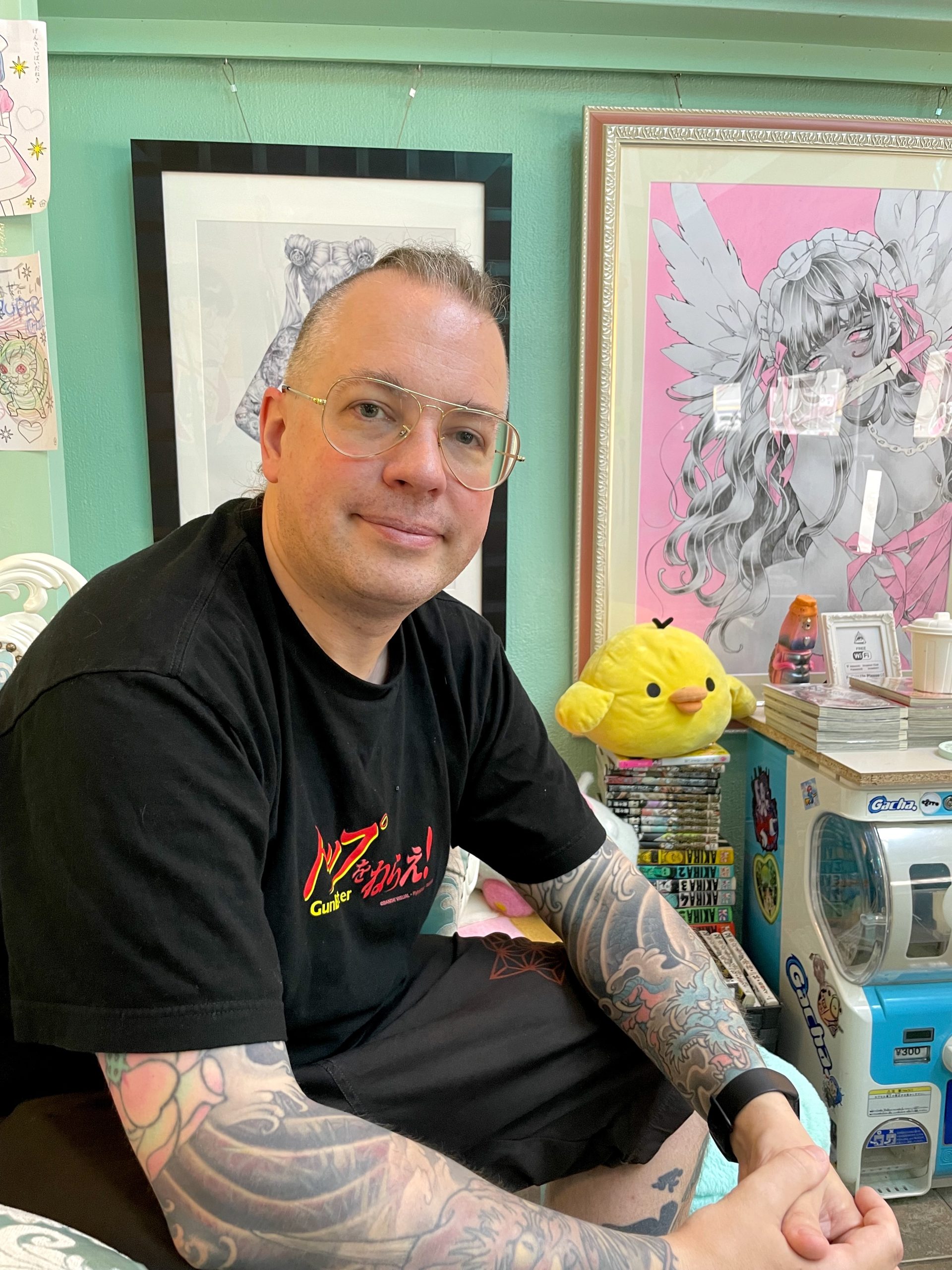
——So there weren’t many people watching anime on TV in your generation, then.
Hori Benny: Back then, if you were watching anime, you were watching OVAs on VHS. I’d originally bought a VCR to watch Star Wars and Star Trek, but over time I picked up more and more anime titles. Then when I saw Akira and Gunbuster, I was totally shocked. Those blew my mind. In America at the time, “animation” meant Disney or The Simpsons, so Akira’s near-future, cyberpunk, dilinquent, ESP world was just unfathomable. And then Super Dimension Fortress Macross and Gunbuster, you had these cute girls riding robots, fighting to save humanity. Up until that point I’d been drawing these big muscly guys, ‘cause I thought that was cool, but I ended up preferring these sexy girls with bouncy hair and sparkly eyes. (Laughs)
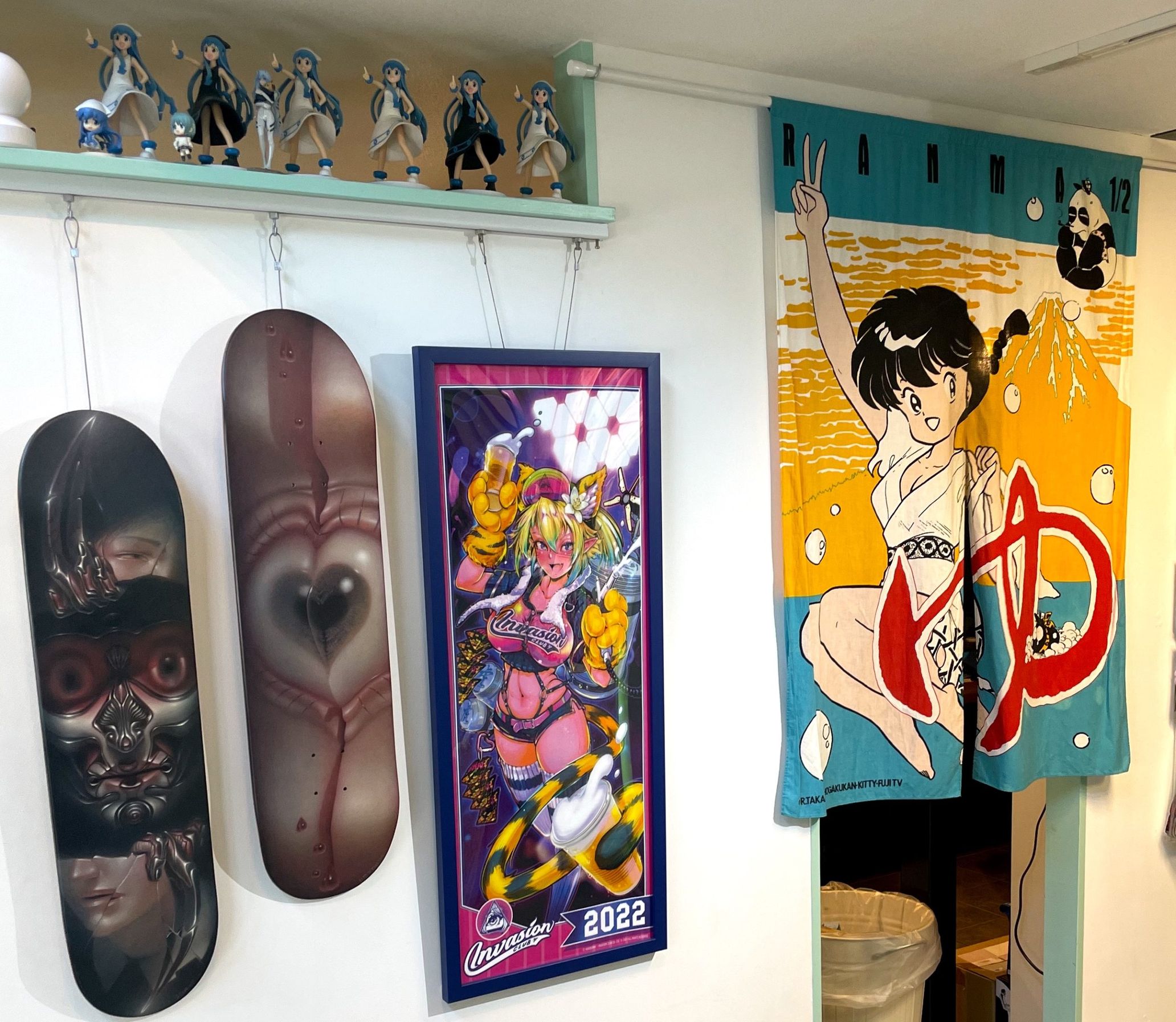
——Who was your anime muse at that age?
Hori Benny: That’s tough…can I only pick one? Hm…I guess my favorite might’ve been Noriko Takaya from Gunbuster. But also Lum from Urusei Yatsura, and Akane Tendo from Ranma ½… If we’re talking more recent anime, I’m pretty into the characters from Squid Girl. I was probably 12 the first time I saw Gunbuster. At the beginning of my adolescence, seeing girls in short shorts go to war, I mean… .
——It must have awoken something in you.
Hori Benny: Exactly! I mean, of course, the story was great too. Everyone knows Hideaki Anno for Neon Genesis Evangelion, but Gunbuster was his debut. I went to the Anno Hideaki Exhibition that was held a while ago, that was really something. Anno has such a high regard and level of respect for the great works of the past, but actually breathes new life into them, which I think is fantastic. He’s where he is now because of the culture he was a part of before, and now he brings that culture into the future. I wasn’t ever that interested in special effects before, but watching Anno’s work, I totally rediscovered their appeal.
——It sounds like all sorts of things made an impact on you the first time you came to Japan. When was the second time you came?
Hori Benny: A year after that, sometime around Christmas. An American friend of mine said he also wanted to go see Japan, so we went together and spent Christmas in Tokyo. Ah, youth. We were in a city so far removed from our American ways of spending Christmas with family. Getting around with my shitty Japanese, we went to see live music with the Japanese friends I made, got drunk on beer and stuffed ourselves at Bamiyan. We spent about two weeks living that way, and it was unbelievably fun.
——It looks like basically all of your tattoos are Japanese-style, right? Did you get them done when you came then?
Hori Benny: They’re from a mix of artists, but I had them all done in Japan. The first time I came to Japan I didn’t have a single tattoo.
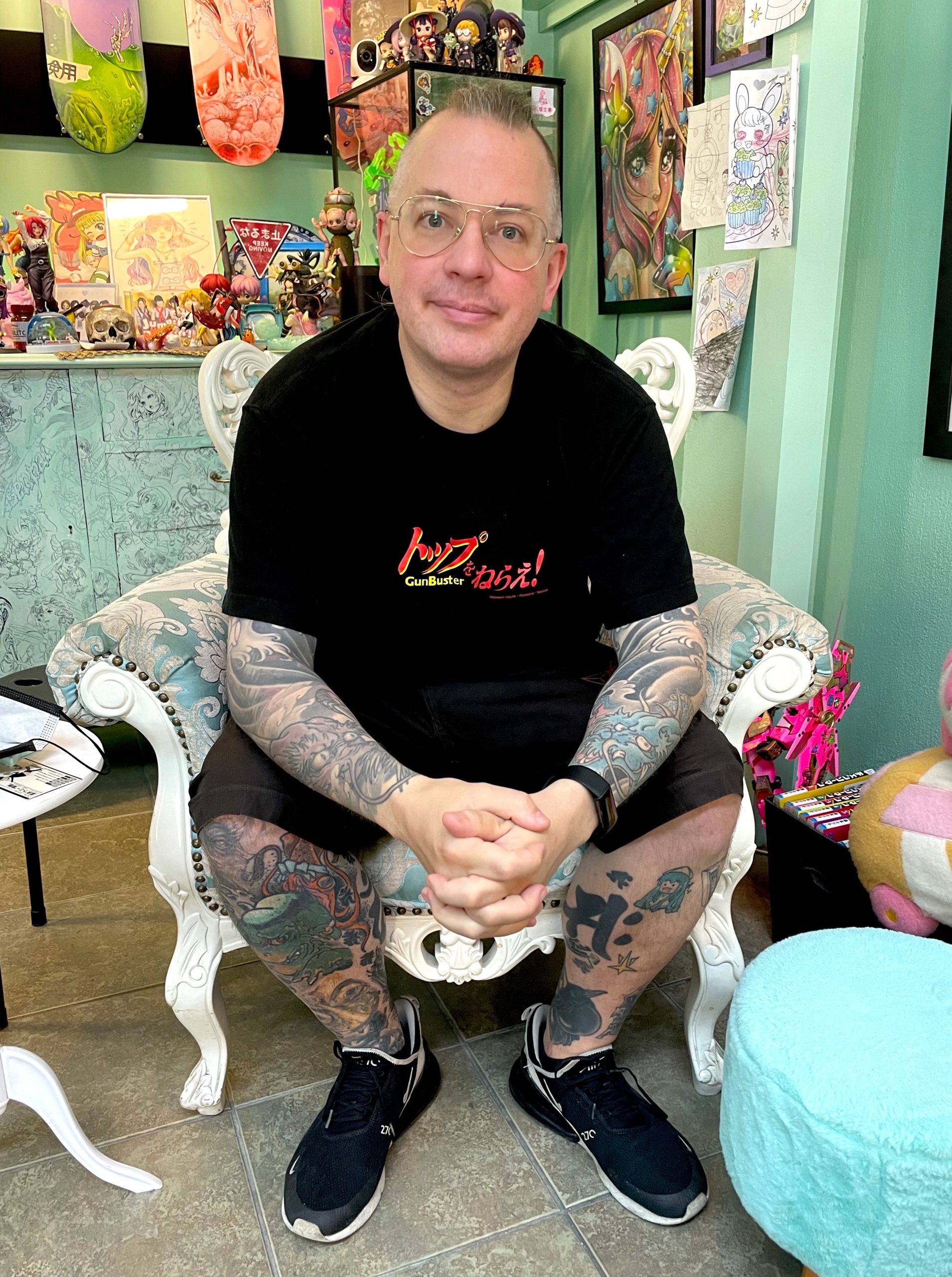
——Out of curiosity, what was it that made you first decide to get a tattoo yourself?
Hori Benny: I had a friend who was a tattoo artist, and his life seemed super exciting to me— making drawings every day, tattooing them and getting paid for it. After that, I started drawing every day in my sketchbook, wondering if maybe I could be a tattoo artist too. But the first step, I thought, had to be getting a tattoo myself. So I got my first tattoo thinking it would deepen my knowledge of Japanese tattoos, but after that I was just totally hooked. After that I began learning the trade at a place called Chopstick Tattoo. Actually entering this world, though, I was in for a shock…
——Did you start out doing super menial tasks?
Hori Benny: Yeah. I mean, I was a total baby. My manners were bad and I couldn’t speak a word of business Japanese, keigo. The reception was all done in Japanese, the scheduling was handwritten, and I even had to give directions over the phone. While handling all of that, I learned the job. Anyway, it was a lot, and I had a lot of sleepless nights. I worked ten years there, and then since August 2014 I’ve been independent.
——Were you mainly doing Japanese tattoos from the start, then?
Hori Benny: No, I mean, at the very beginning I was only drawing dragons and tigers, but after a while I began to branch out into other genres to develop new skills. I’d take whatever request came in and get it done as best as I could. Eventually I started getting hung up over certain details, and became way too busy. I basically didn’t take a break for my first five years as a pro. Weekends didn’t exist as far as I was concerned, let alone holidays like New Year’s.
——I mean, we were living in an age where you had to work like mad to make your dreams come true, weren’t we? How did you come up with the idea of anime and manga tattoos?
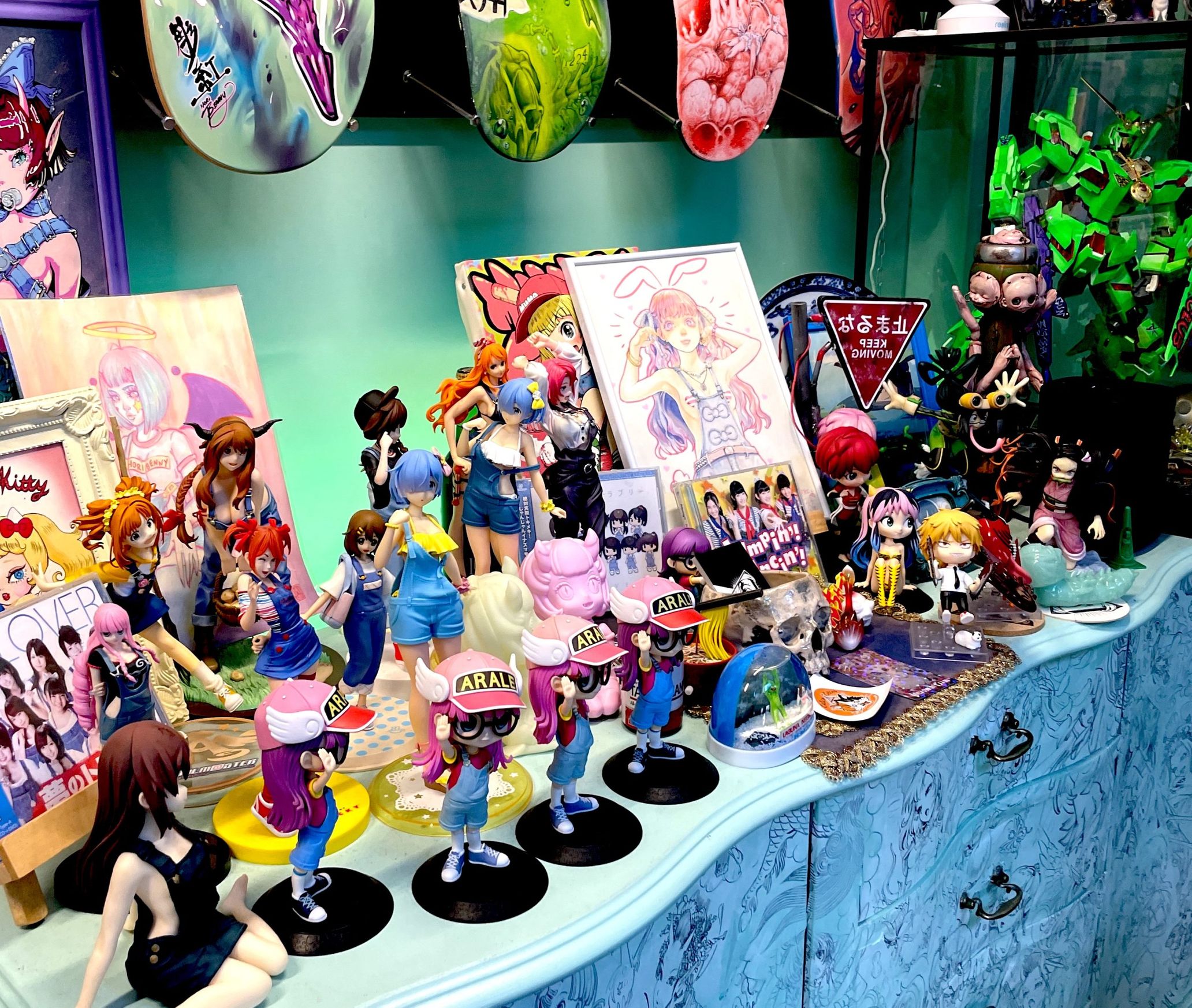
Hori Benny: I went independent in 2014, but from a few years before then I’d thought it might be interesting to make tattoos of my favorite anime characters. There probably wasn’t anybody doing that at the time in America, or, I mean, even if there was, it wasn’t really established as a genre. Before that, though, a senpai of mine had done Gundam tattoos, so it’s not like I was the first person to come up with the idea.
——So it wasn’t an established genre of tattoo yet, right?
Hori Benny: Right. I mean, tattoos were more divided by genre then than they are now— old school, the traditional Japanese style, black-and-gray, west coast style, letterings, tribal tattoos. If you worked outside of those boxes, your senpai would be like “what the hell do you think you’re doing?” Outside of Japan, tattoos are usually just done for fun, so I did see pictures of anime tattoos on the internet but all of them were just so poorly done. There was this one Evangelion tattoo I saw that was a total mess, and when I read the comments on the owner’s post and saw everyone was making fun of them, which really made me cringe.
——As an anime fan, you mean?
Hori Benny: The person who got the tattoo seemed young, and as an anime fan myself I couldn’t help but think “what’s wrong with liking anime?” From that point I decided to make anime tattoos executed at a level that nobody could make fun of, which eventually became “otattoo.” I think the first one I did might’ve been either a Squid Girl or Urusei Yatsura tattoo. Some time after that I started asking friends to let me tattoo on them, and then I made a portfolio of them.
——You must’ve caused quite a reaction.
Hori Benny: Everyone was like “Yo, what!?” It was a pretty positive response, and I don’t mind being in the spotlight a little, so I thought why don’t we make an event out of this, and rented a room with my friend Tom— a fellow tattoo artist and otaku— in this subcultural gathering space called the Misono Building, where we hosted a series of “Otattoo Nights.” It was a pretty unusual setup, people came in cosplay and the DJ was spinning anime songs while we did tattoos. About 70 people showed up to the first event. Things got even more interesting from there, and at its peak one night we had like five tattoo artists participating. After that was over I kept things going in that direction— I went independent and set up a studio filled with the same vibes called Invasion Club.
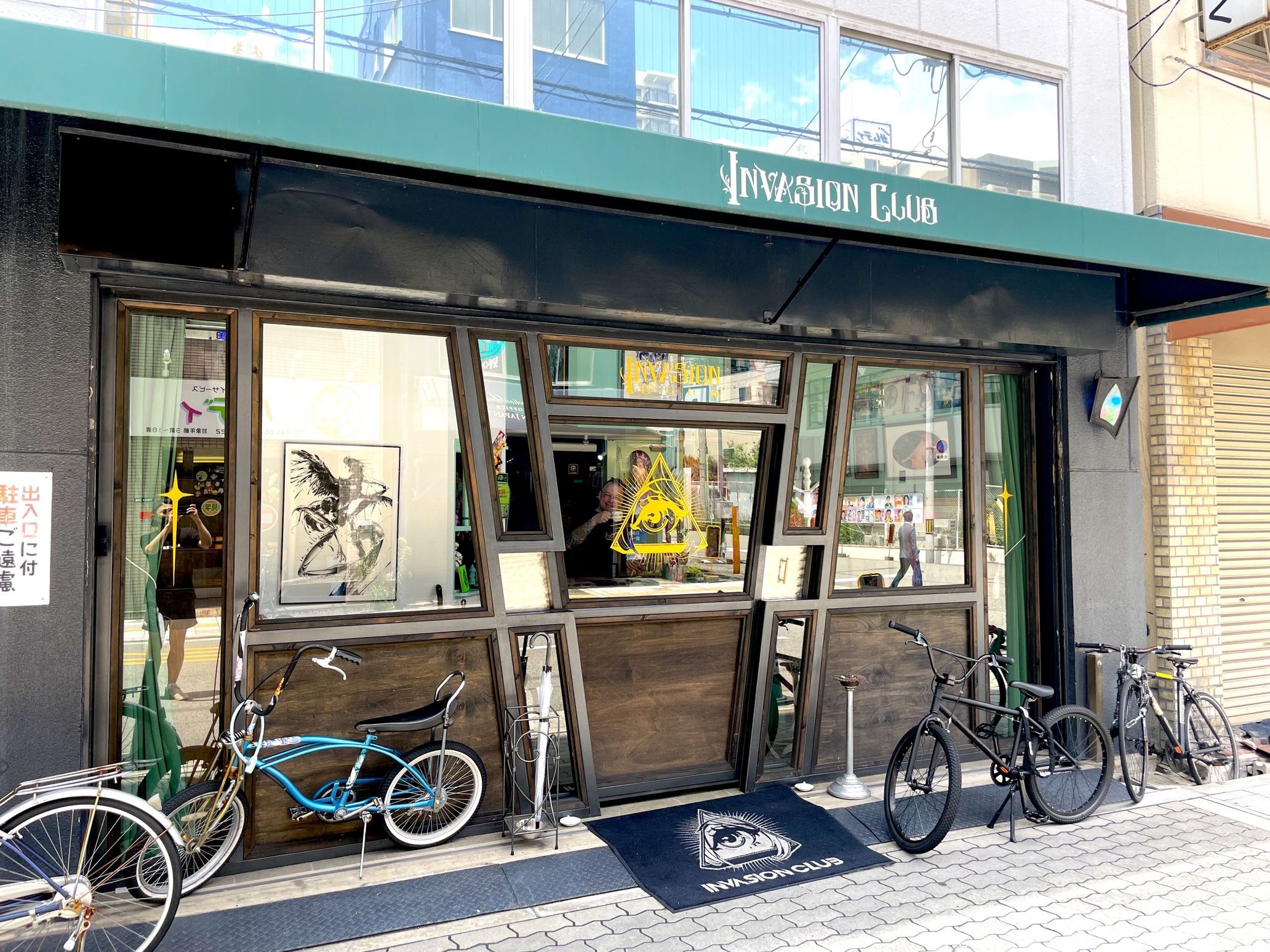
Outside of Invasion Club
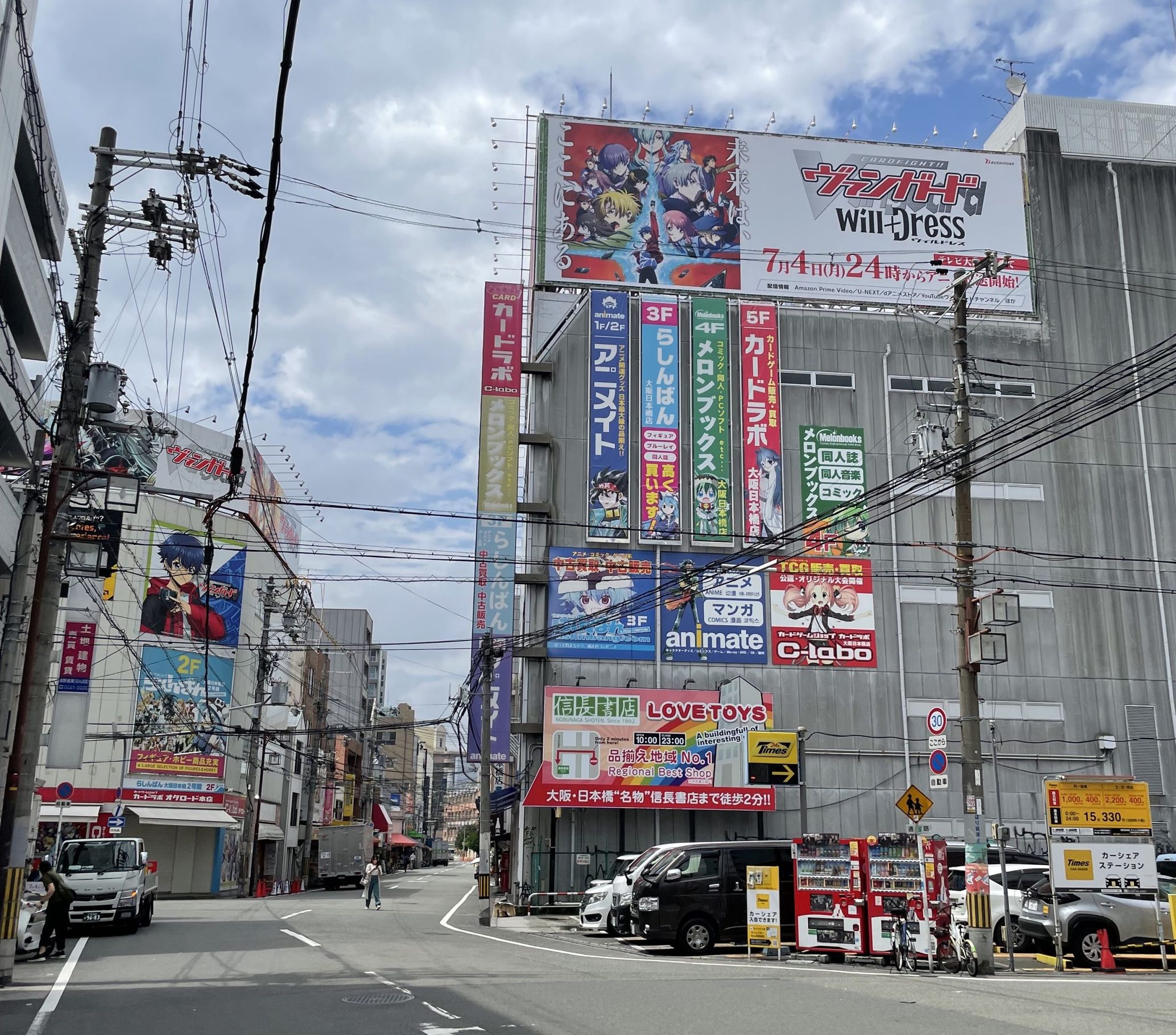
A studio near Nipponbashi, the holy ground of Kansai otaku culture
——The space you’re working out of now is near Nipponbashi, sometimes called the “Akihabara of Osaka,” a holy land for otaku in Kansai. Was that why you chose the location?
Hori Benny: Yeah, kind of. But it’s pretty hard for a foreign tattoo artist to get a lease on a space here. In case something bad were to actually happen, I wouldn’t want to lie about this stuff, but if I say I’m a tattoo artist from the get-go I’m basically gonna get turned down wherever I go. People freak out a little bit, but I don’t see it as such a discriminatory thing per se, I think it’s just sort of inevitable. After eight months of searching this was the place I finally found. It seems like it was originally a garage, so I had to lay out everything from zero, a total bare-bones state. At first all of my clients were Japanese, but thanks to inbound tourism more foreigners started coming and the balance gradually shifted. Things went in that direction for three or four years, but once the pandemic began it’s basically been Japanese clients only. At the moment I’ve got about a half-year wait on reservations.
The challenge of retaining my own style while making it stands out
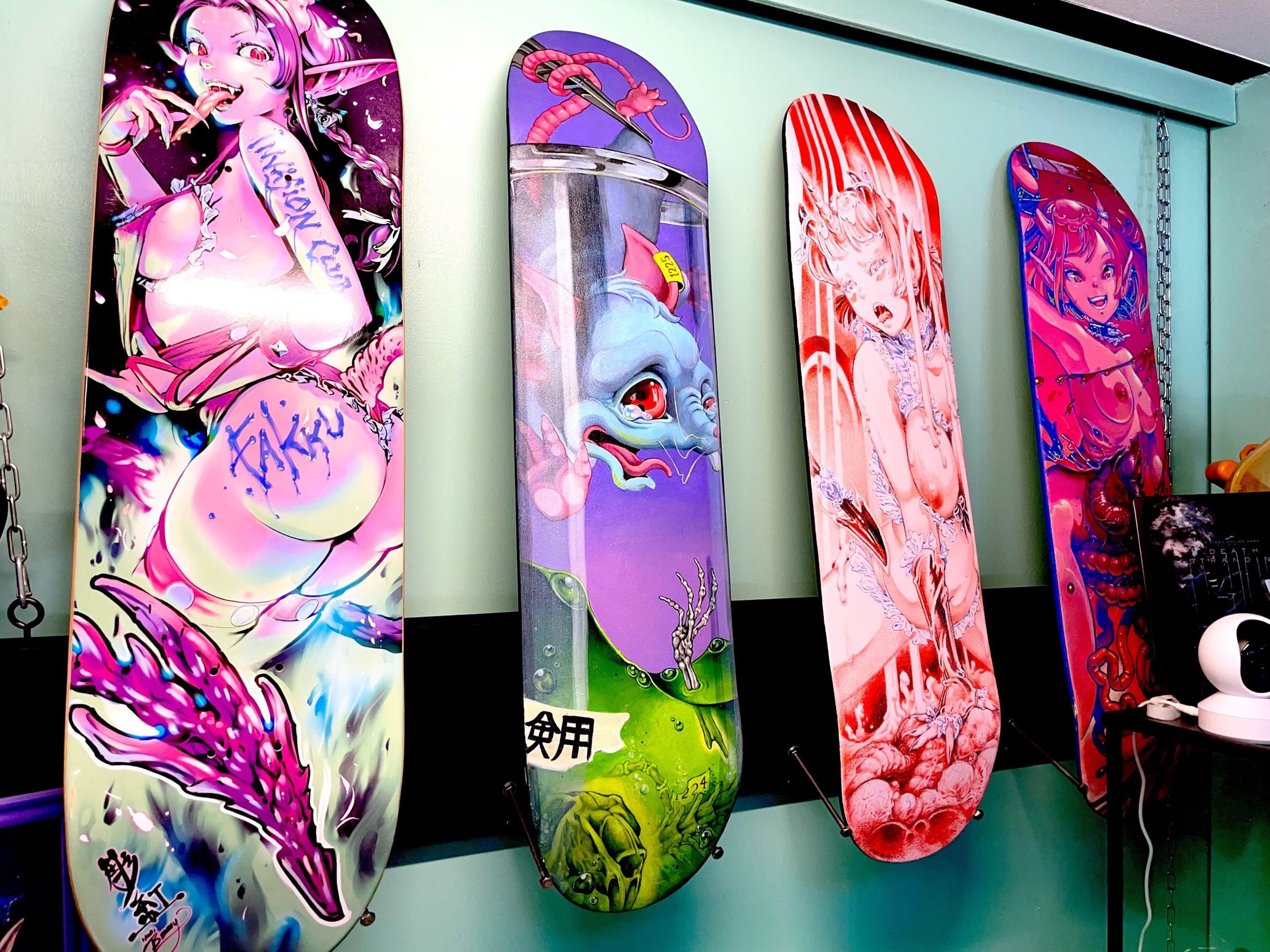
——From what I hear, once you get that busy you lose time to sketch your designs, right?
Hori Benny: I just barely have enough time to make the sketches in time for my appointments. My schedule’s pretty irregular, so I might have two days on, one day off, three days on, one day off, two days on, something like that. On my off days I research the anime series or characters that my clients request, a week out or so from their appointments. If I have the time I’ll watch an episode or two, but if I’m pressed I’ll still at least watch some clips on YouTube to get a feel for it. People seem to think I’ve seen every anime out there already, but of course I haven’t. (Laughs).
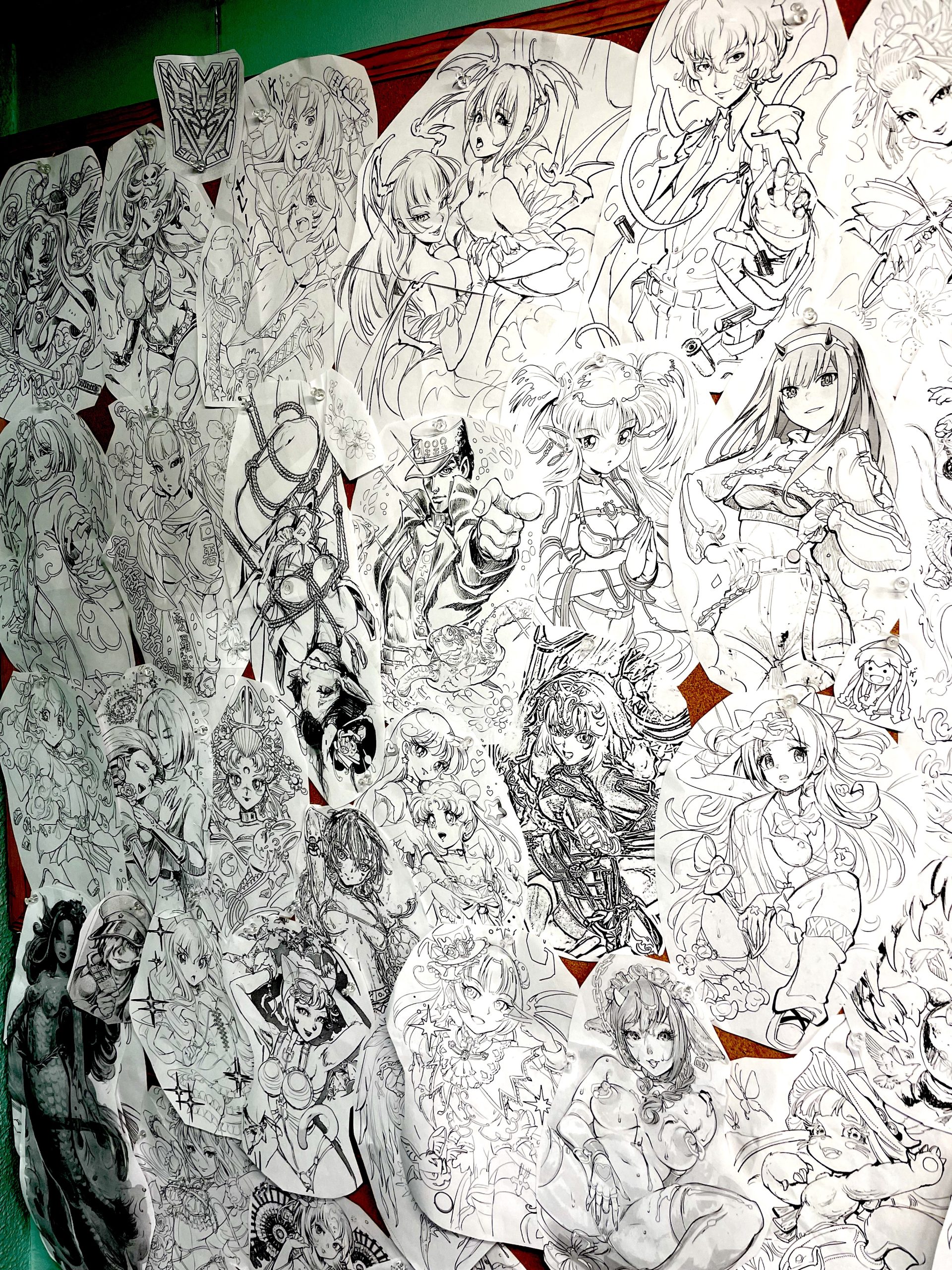

Lots of sketches
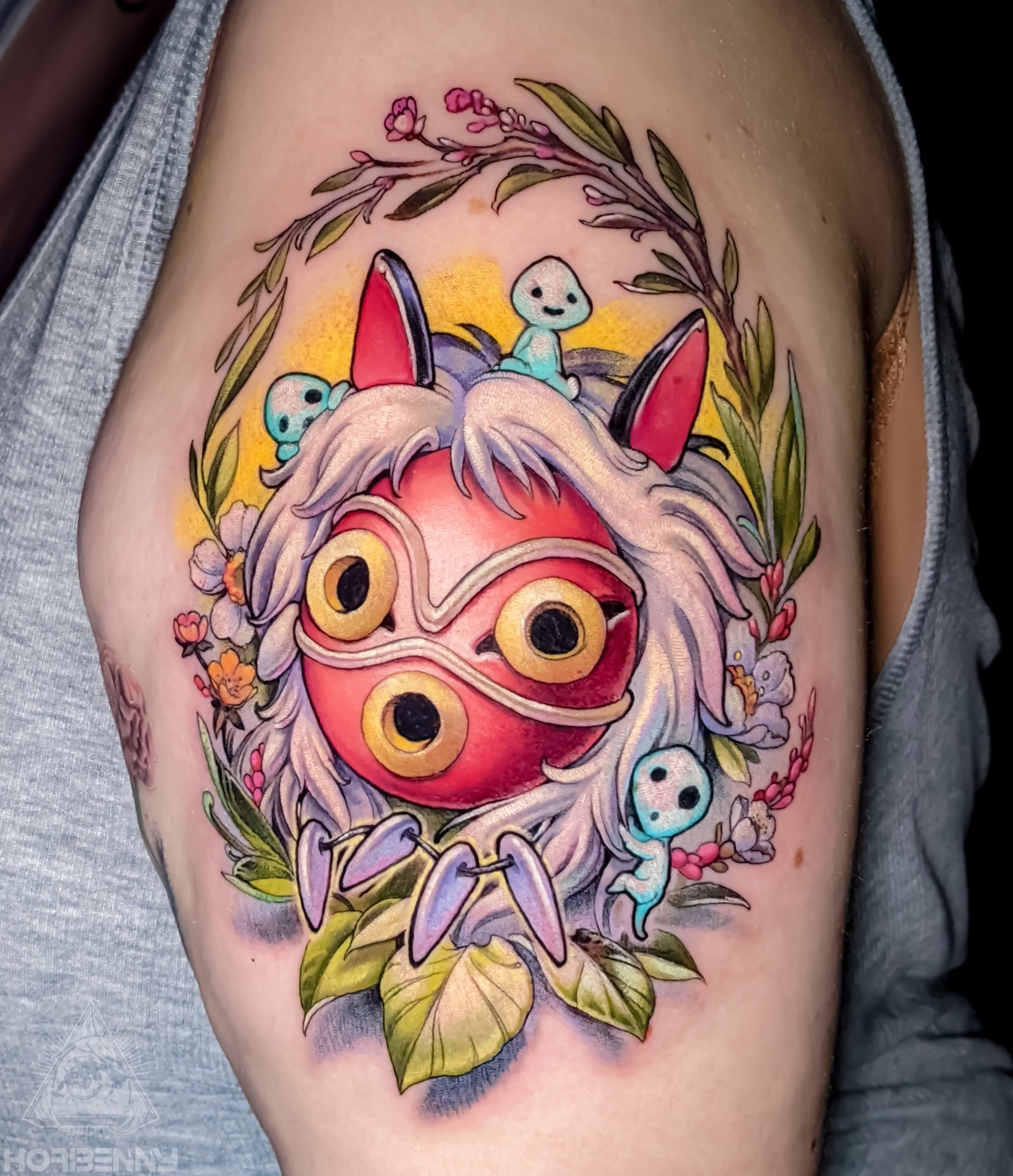
San’s mask and Kodama from Princess Mononoke
——When you get requests, do people only request the character? Or do they request other things, like the pose, too?
Hori Benny: I mean, it’s different strokes for different folks, so the details customers focus on are case-by-case. Some people just want me to do this character wearing this outfit, others request that I draw them exactly as they appear in this one specific scene. So the first thing I do after the character’s been decided on is to have the customer send me a photo of where they want the tattoo on their body. This is probably because of the training I had in Japanese-style tattoos, but I put a lot of thought into matching the pose of a character to the shape of the body.
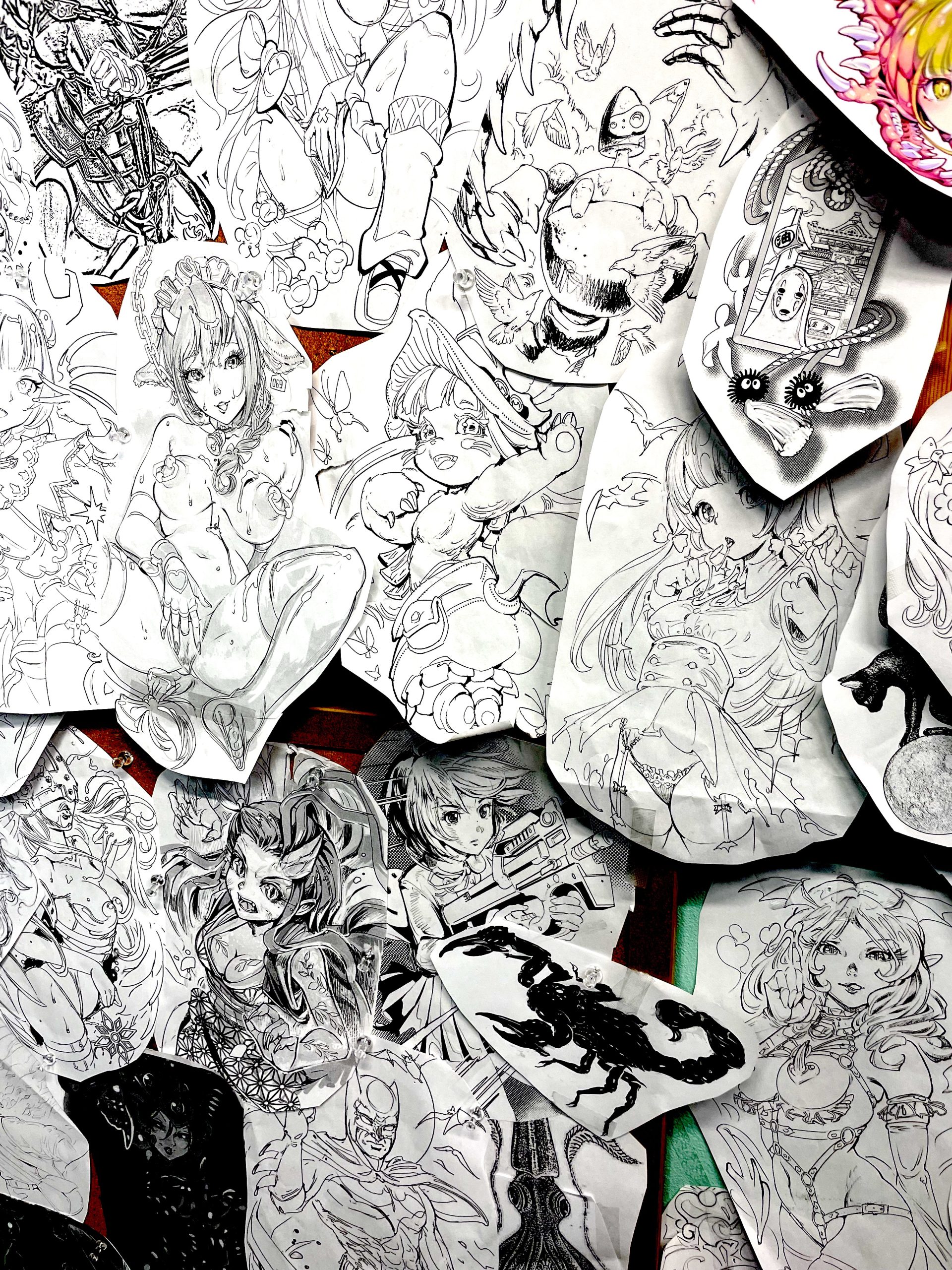
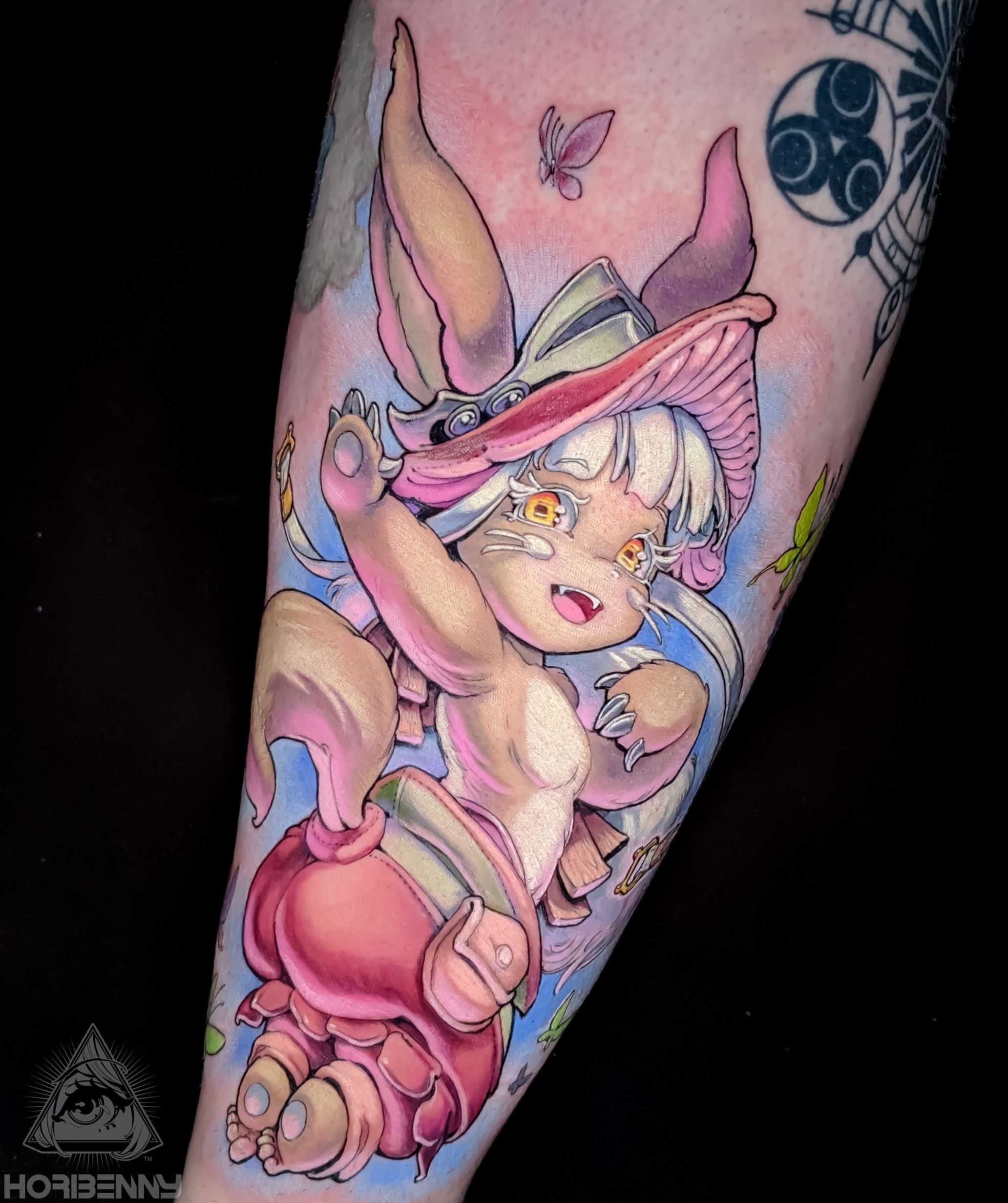
The final product depicting Nanachi from Made in Abyss shown on the right side is based on sketches like those shown on the left
——I see. After determining what makes each character unique, you use your Hori Benny touch to make fans of the anime feel like their expectations haven’t been betrayed. Finding that balance must take a lot of skill.
Hori Benny: For example, there’s a way of balancing the face so that one might say “This is a Rumiko Takahashi touch!” On one hand you might have a client that says “I love this character so keep it true to the original,” whereas another might say “do as you please!” Then it’s a matter if I can draw something that pleases the client.
——Is this design one of your original characters?
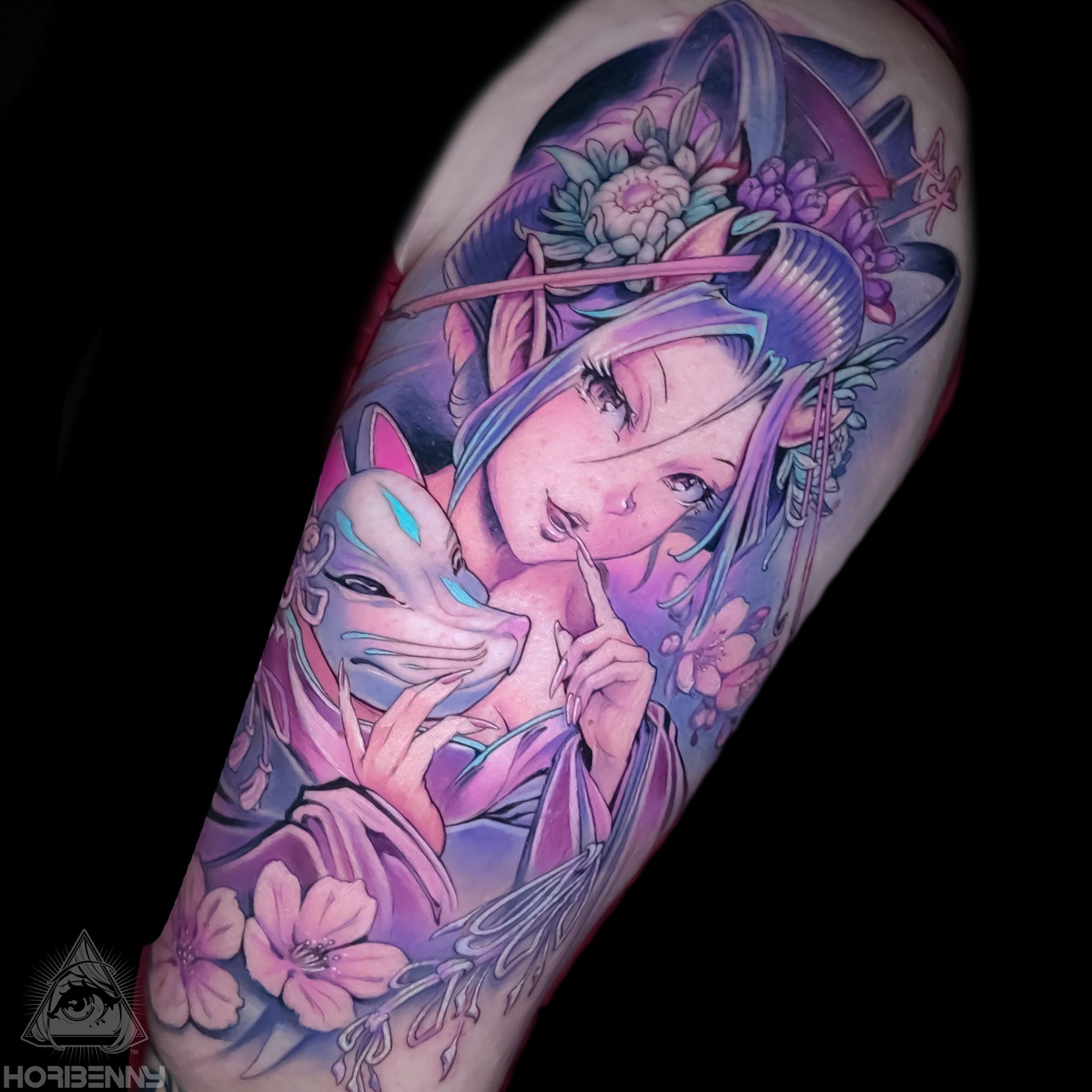

Original succubus characters designed by Hori Benny. Courtesans and customized school uniforms give a flair of showiness
Hori Benny: Yeah. Before the pandemic, I suddenly got this feeling that if I’m only tattooing pre-existing anime characters, doesn’t that dilute my artistic expression? After that I started to suggest working with original characters to my clients. Check out this succubus here. It’s super fun for me to come up with these details, how to make the characters look cool, like this sukeban-style school uniform. The more I do these, the more ideas come to mind, and I’m able to give the customer something that’s truly one-of-a-kind. That’s what I’ve been pursuing lately. Of course it’s fun to tattoo my favorite characters, too, but time ticks a little faster every day, and I’m still developing my craft.
——What details would you say you’re most particular about?
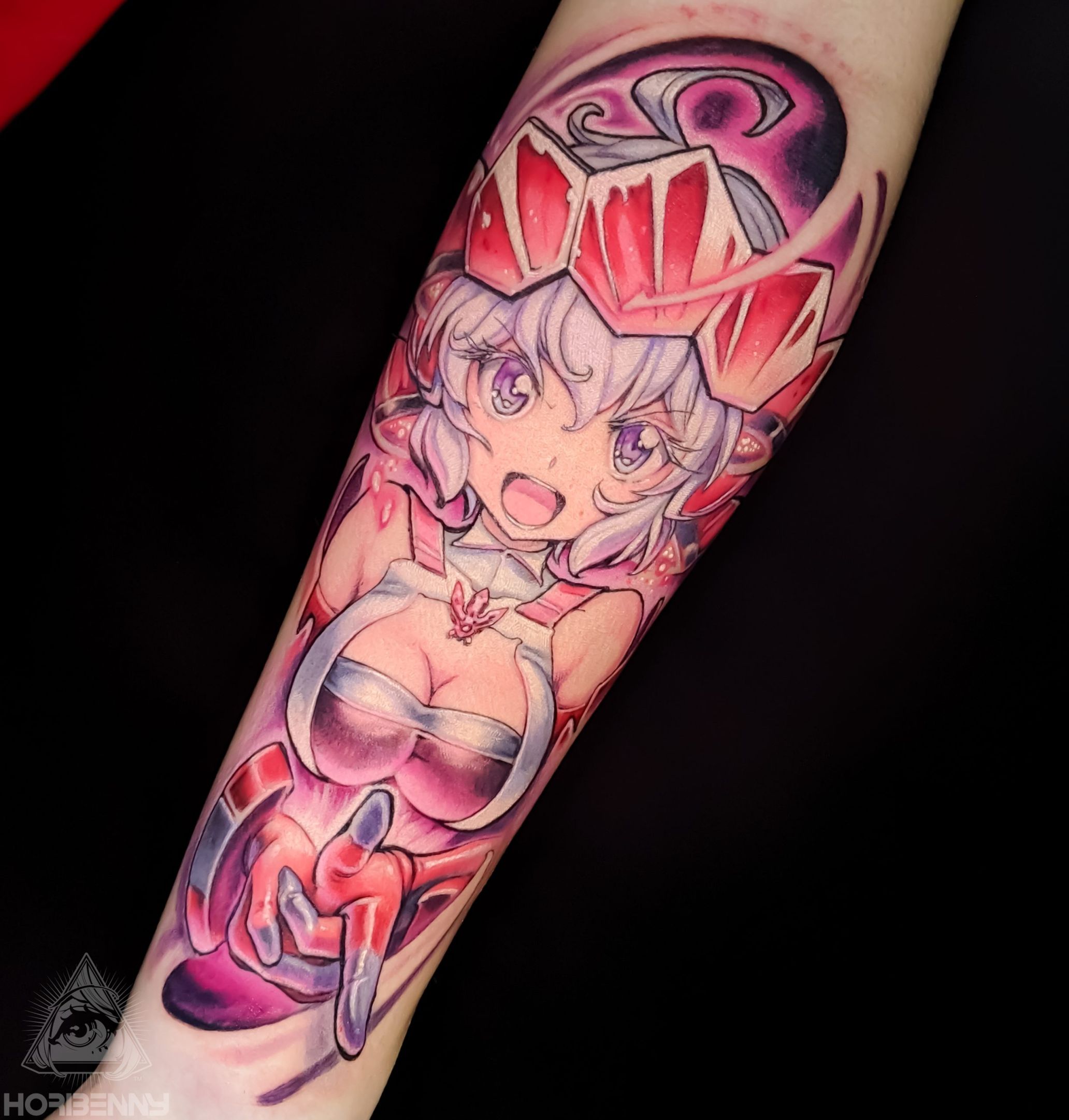

Yukine Chris from Symphogear and Alice Synthesis Thirty from Sword Art Online
Hori Benny: Well, there are a lot, but since I’m working with a flat surface I’d say I really try to make the picture look like it’s moving. It’s about paying attention to the twists and turns of the pose, drops of sweat flying off, hair blowing in the wind. Paying attention to physics and the flow of the body makes the characters look cuter. I pay attention to details such as pants or shorts hugging the butt, a little skin poking out around the waist, chest nearly bursting buttons of the shirts, shirts get wrinkled as the body moves. Aren’t those sexy? I take a lot of hints from anime figures. They basically have to look cool and cute from every angle. So I hope to channel that in my tattoos.

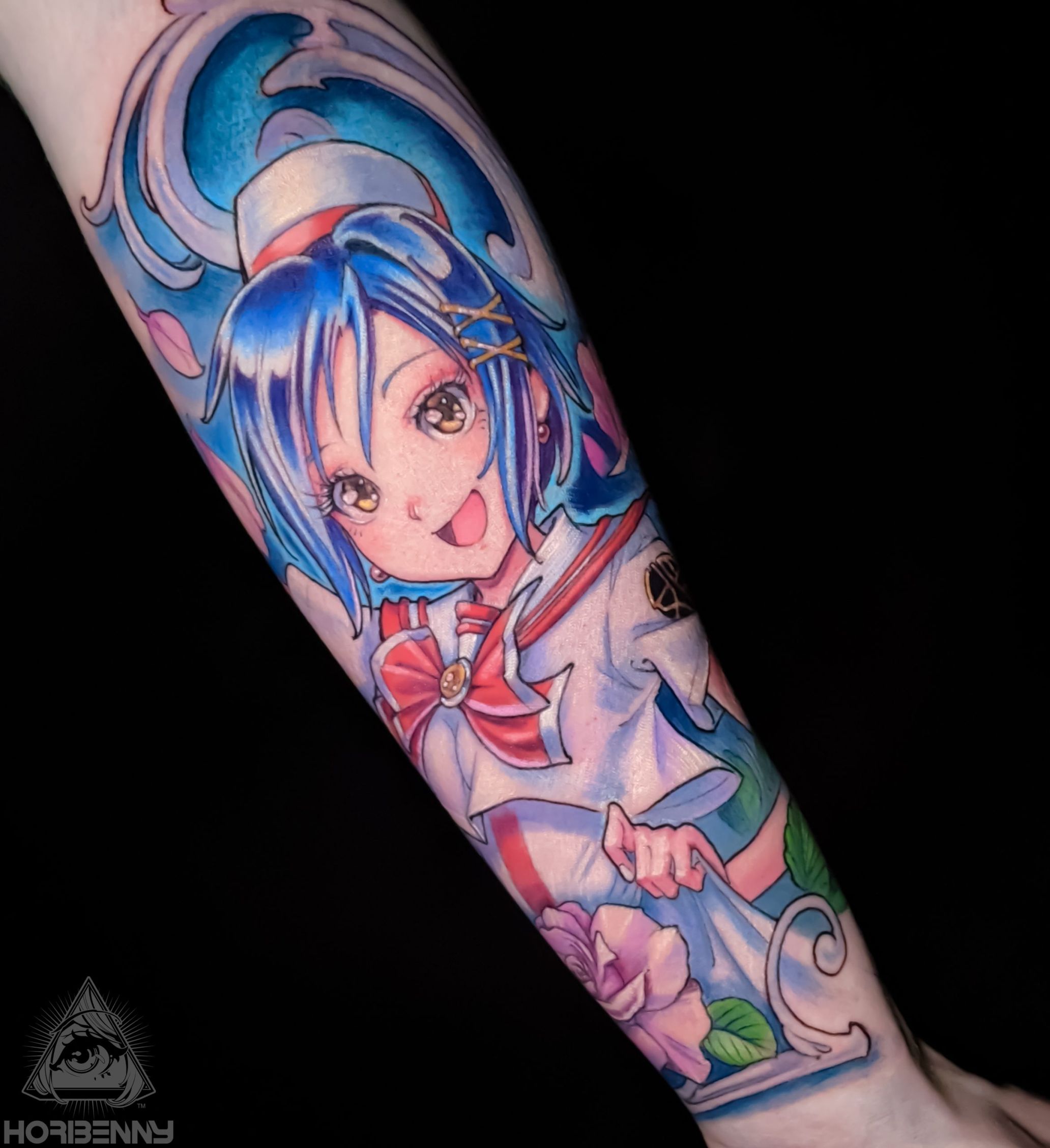
Sweat and sizzle in dynamic poses. Note the shadows and wrinkles in the clothing
——What’s the most common praise you get from customers?
Hori Benny: Hmm, I dunno. Hey, Sacchin [Hori Benny’s manager], what’s the best thing about my tattoos?
Sacchin: [instantly] The nipples, right? Absolutely “fappable” nipples!
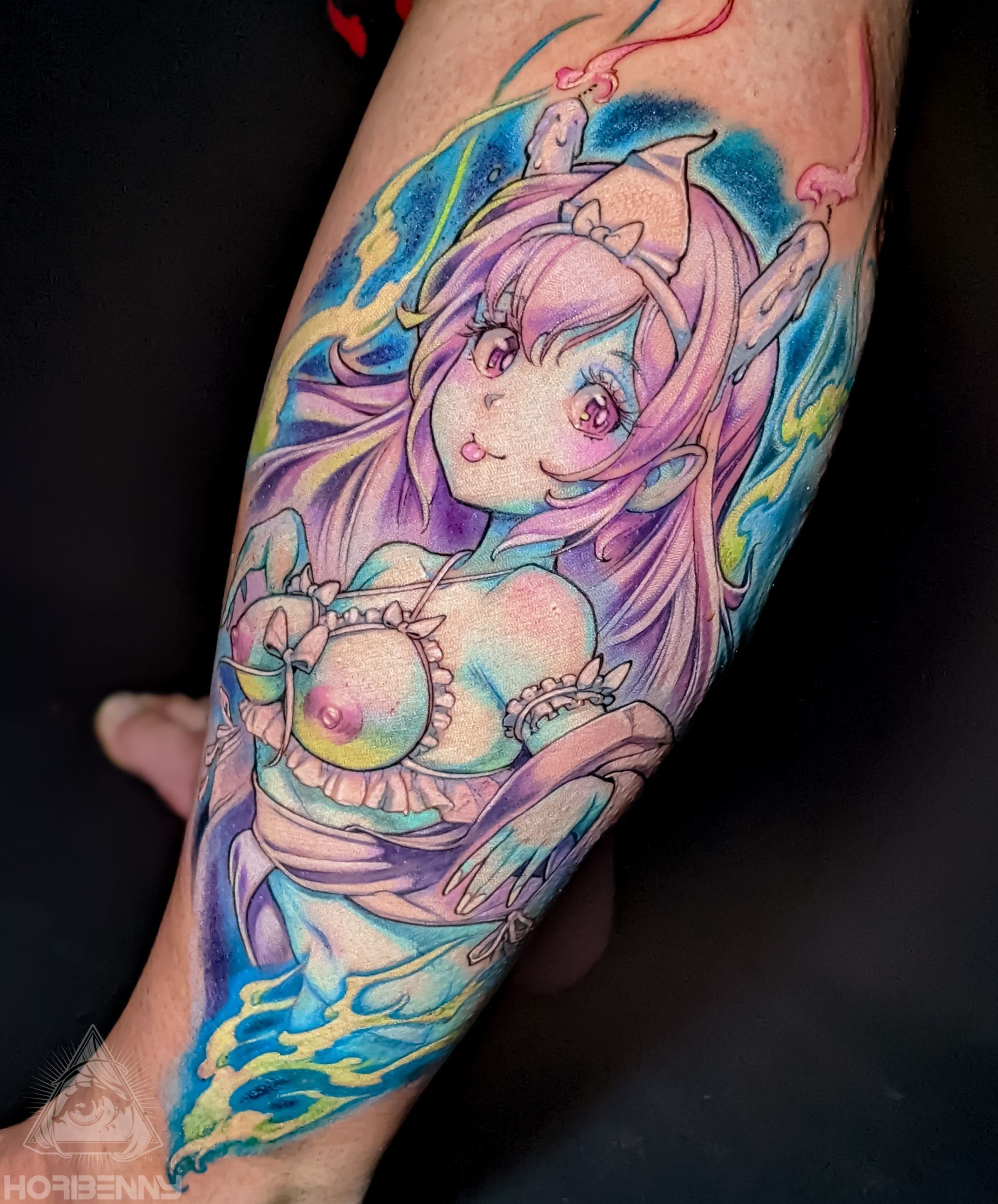
The nipples lauded by Sacchin. Bewitching
Hori Benny: Nipples, huh? [Laughs] I’m an ass man, myself. I do get praise for my use of color, though. Looking at this piece here, it’s really difficult to express details like the sharpness of the sword, the softness of the flowers, the gradation of the background, so I really aim to get that right. It’s also really important for me to express emotion in the work I do. Like, take a look at this Rengoku [Kyojuro] tattoo. Did you see the Demon Slayer movie?

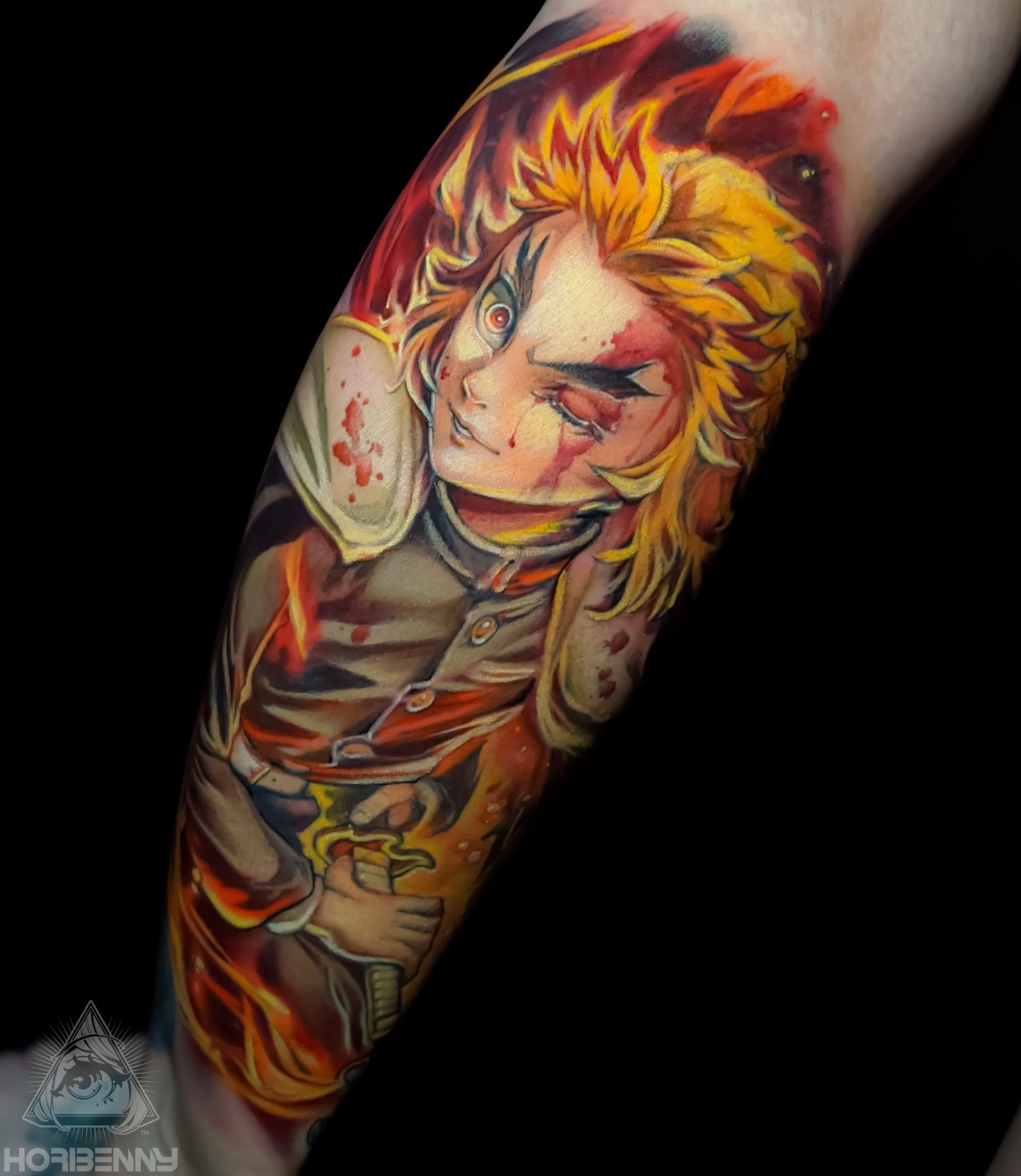
Left: The delicately expressed, differing textures of the sword and flowers. Right: Rengoku Kyojuro, from Demon Slayer – The Movie: Mugen Train. Unrestrained expression of emotion and narrative
——Of course.
Hori Benny: It’s a depiction of Rengoku in the last scene of the movie, so if the viewer can’t feel that sense of resolution he has in the scene itself, I couldn’t call the tattoo a success. I got really hung up over that. Also, I can’t only consider how the tattoo will look for the person getting it, but also for their friends, their family, the people they’re going to show it to. Because tattoos are for life.
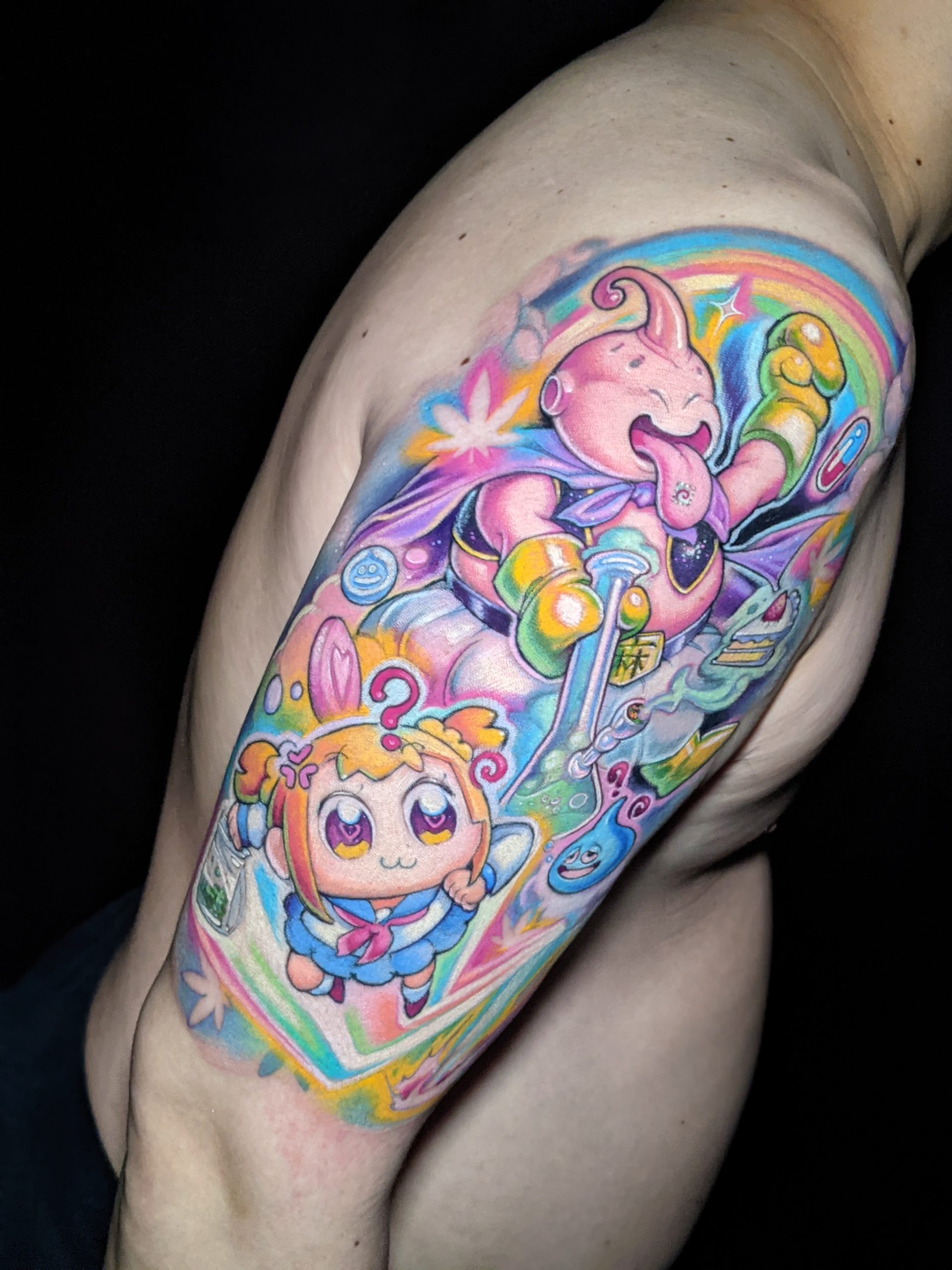
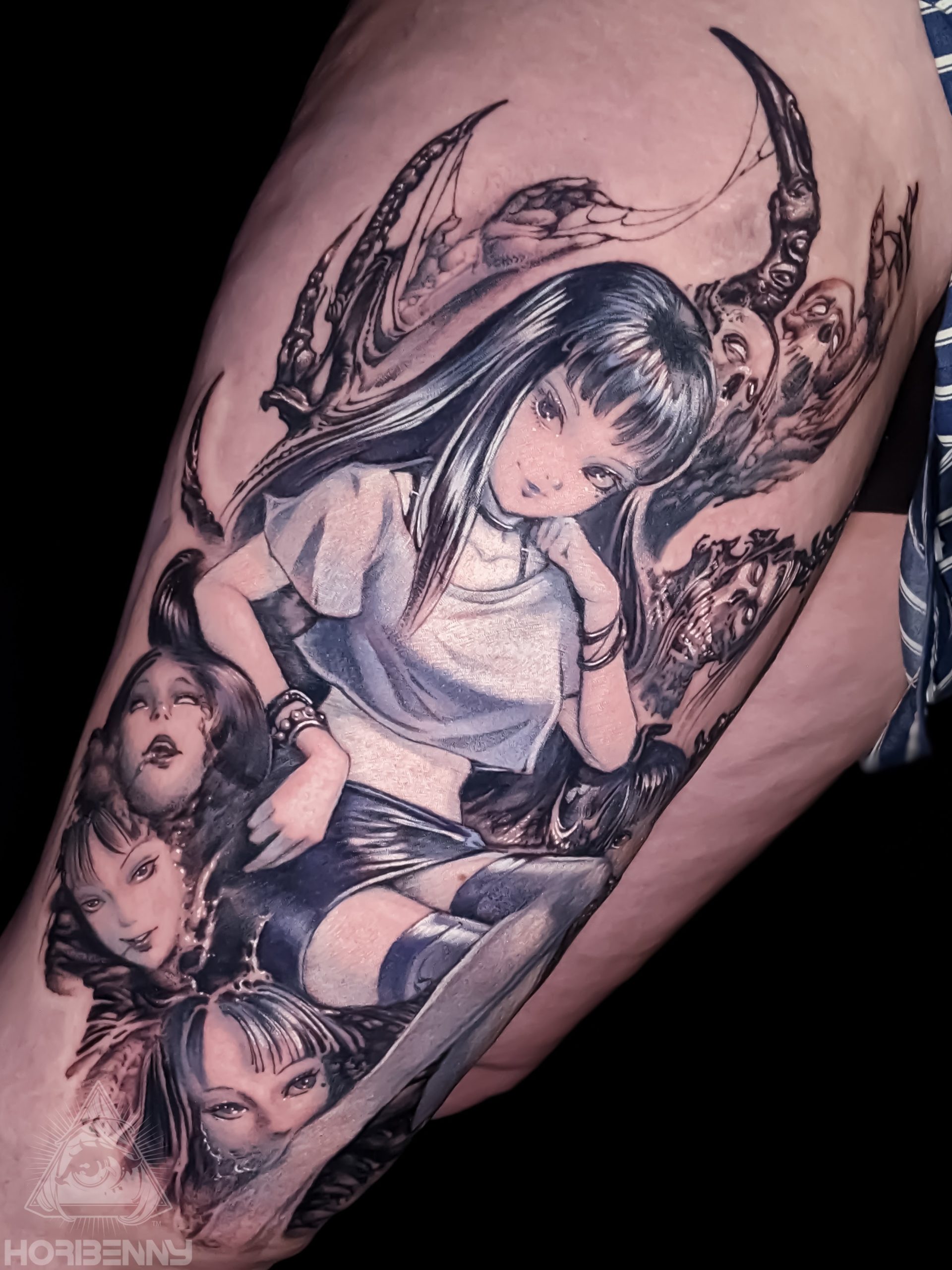
Majin Buu from Dragon Ball Z and Popuko from Pop Team Epic; Tomie Kawakami from Junji Ito’s Tomie. Brilliant detail in color and expressive excellence in monochrome
——Speaking to that point, I think the quality of your work gets through to people unfamiliar with the anime or characters you depict. What are some of the commonly requested characters or series for you?
Hori Benny: I get a lot from Shonen Jump, things like Chainsaw Man recently. Also characters from Touhou and lately V-Tubers. I’ve done about ten of those so far, but they’re pretty hot as a genre. The fact that they’re popular enough for people to get them tattooed made me think woah, what a crazy era we’re in. V-Tubers are essentially 3D models, so they’re easy to translate into tattoos, but that actually makes it difficult to get the characters’ nuances, no matter how many hours of content I watch trying to get it right. I sometimes worry if I’m really capturing their charm or not.

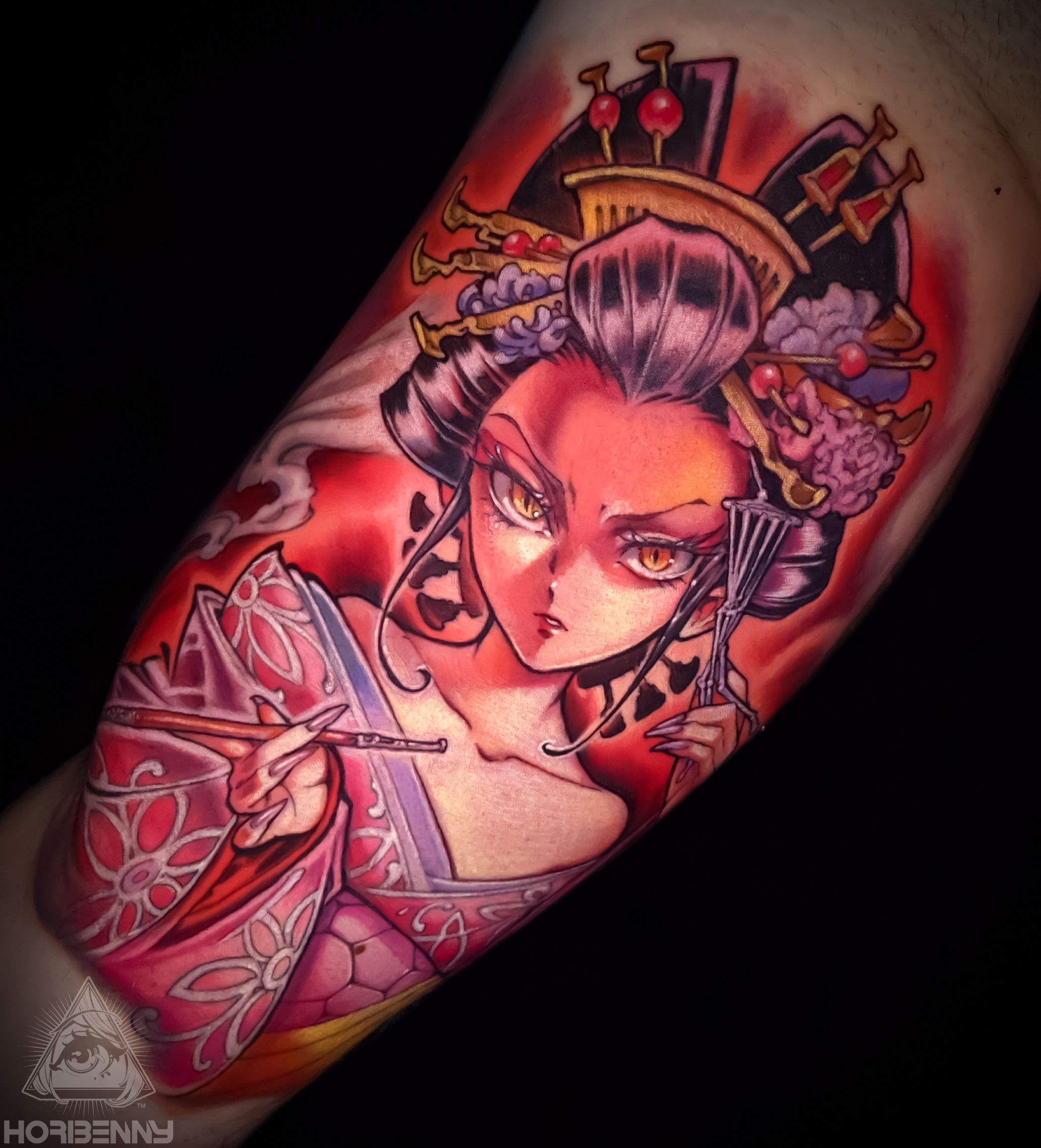
Popular Shonen Jump characters, Nazuko Kamado and Daki from Demon Slayer
——Whether you know or don’t know— or the depth to which you know— shows up in the quality of the tattoo itself.
Hori Benny: Right. At the end of the day, knowledge is pretty important. In traditional Japanese tattoos, you sometimes see motifs from classics like Water Margin or Romance of the Three Kingdoms, where even the patterns of the characters’ clothing have meaning. These days there’s a discussion about how to evolve those traditions, and a lot more freedom to work creatively within them, but if you lack the knowledge and miss the mark, that’s really embarrassing, since customers put their faith in the tattoo artist. I know a bit about Japanese tattoos, but I’m no expert. The same goes for anime. It’s just that I understand the feelings of people who love anime and manga.
——How many artists are there working as a part of Otattoo now?
Hori Benny: Right now in Tokyo, there’s Mica Cat at Calico Circus Tattoo. She does all genres of tattoos too, but she’s a real-deal otaku and has an amazing personal style. Otattoo is picking up outside of Japan too. If you check the “Mononoke Tattoo” hashtag on Google, you get a lot of hits, but that’s what makes me feel like I have to keep developing my own style to stand out. I still feel a rush of pressure every time I start working on a tattoo. There’s no greater rival than yourself, you know? Every day I think to myself, “I want to go beyond the person I was yesterday!” To do that, I need to have my own style. I can’t think of any greater success than having my work recognized by people at a glance.

Chibiusa and Luna from Sailor Moon
——To borrow a line from Gunbuster, “Never stop striving. Overcome, and fight!” Invasion Club also has an apparel line, right?
Hori Benny: Ever since I was a kid I’ve been making clothes for myself by silk-screening logos and illustrations of my favorite bands on T-shirts. When you do that for a while, you eventually start wanting to put your own image or design on them, right? So somehow that escalated into a brand. (Laughs). Originally I just wanted it to be merch that our customers could buy as souvenirs, but I got super fixated on making the designs stand out more, the quality being more particular, and eventually we ended up with a bunch of items… It’s not just clothing, we do eco bags, masks, hairpins, chokers, crossbody bags too.
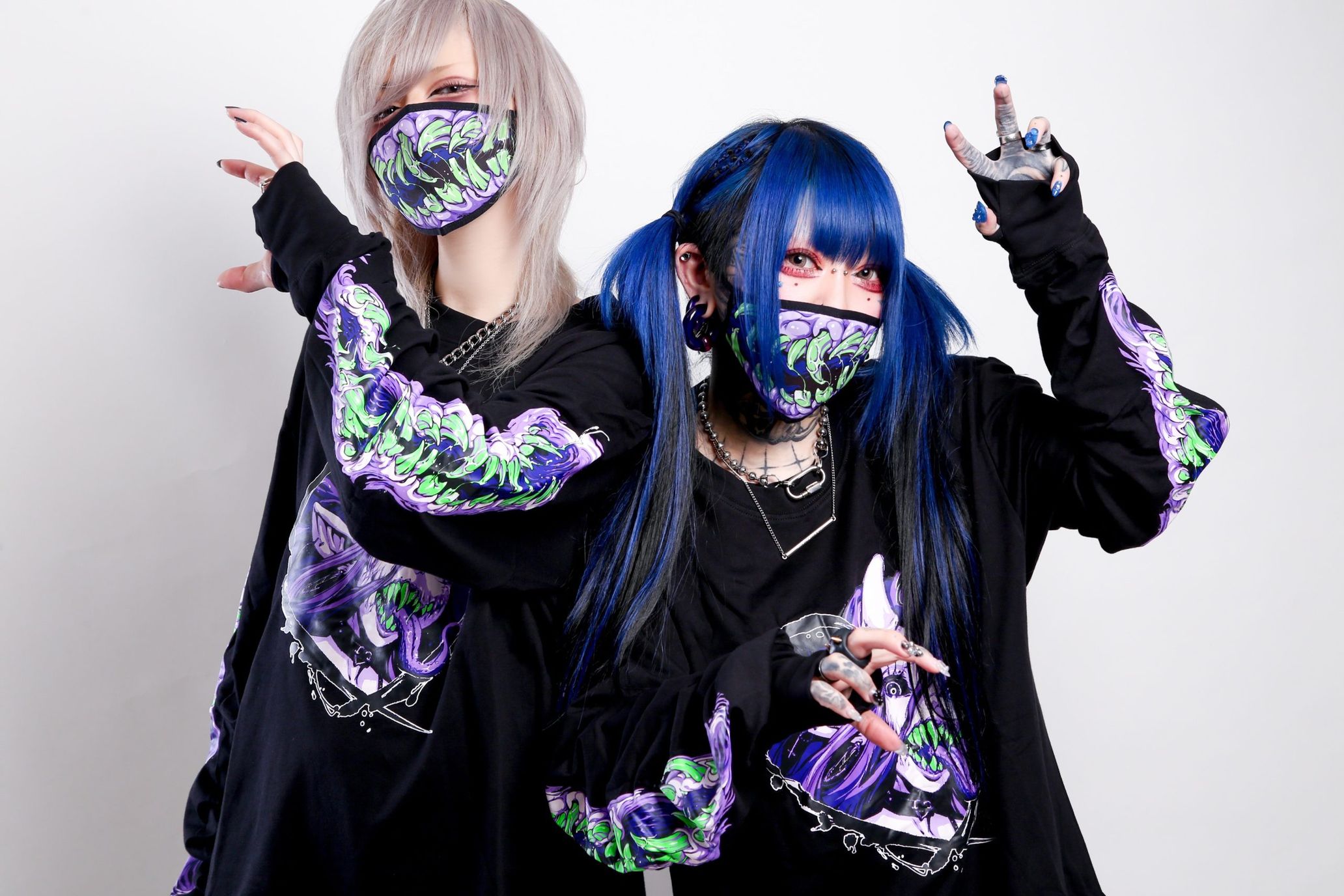
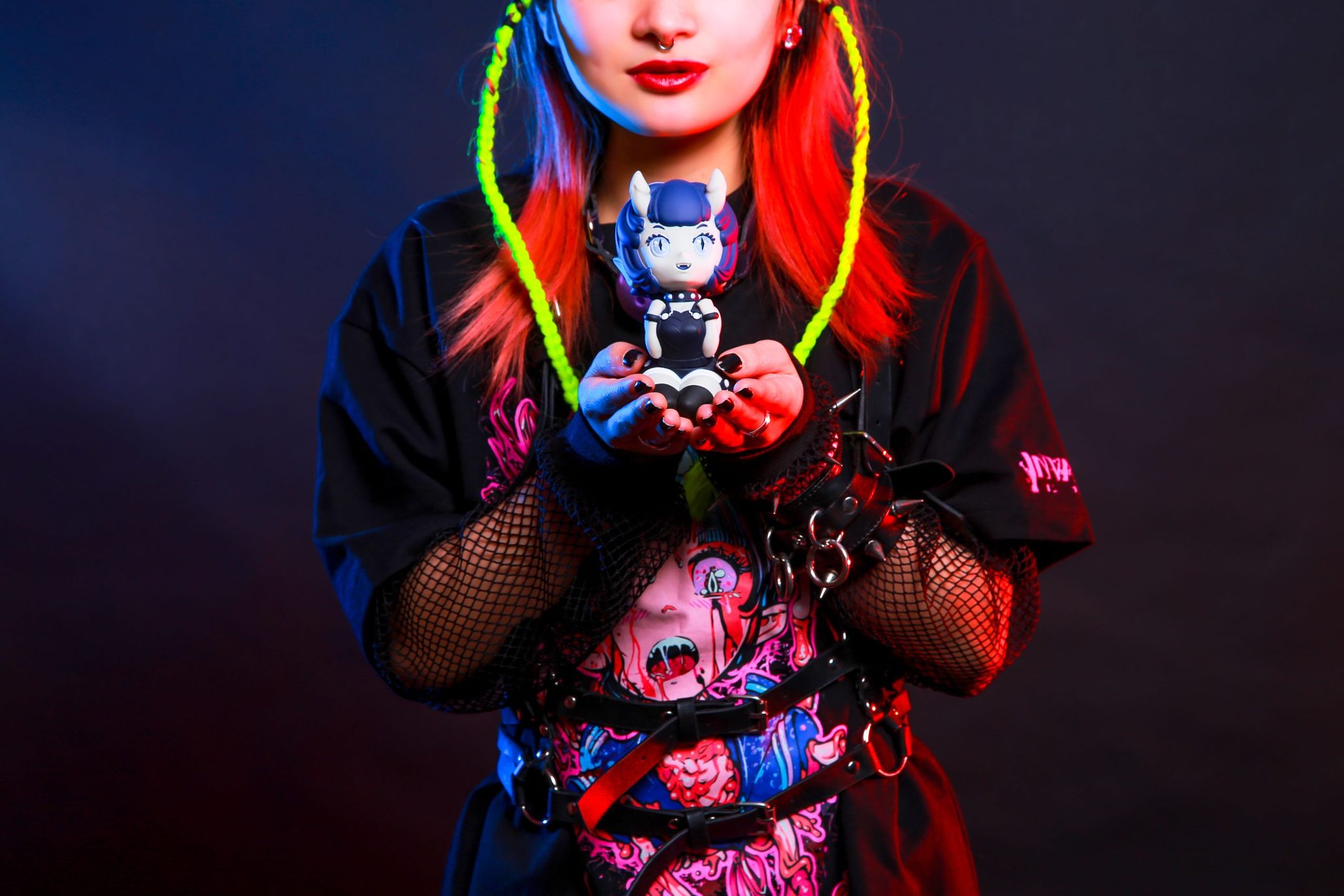
——I wonder where things will go from here. (Laughs).
Hori Benny: No, really, though. We’ve already made vinyl figures too. I’m planning to do a drop of those in new colors at the end of the year. It’s the same with tattoos, the more you do, the more adventures await. And it gets more interesting every time. Once you’ve made it this far, you’ve got no choice but to go as far as you can.
Edit Shuichi Aizawa(TOKION)

